
Ernest Miller Hemingway was an American novelist, short-story writer, journalist, and sportsman. His economical and understated style—which he termed the iceberg theory—had a strong influence on 20th-century fiction, while his adventurous lifestyle and his public image brought him admiration from later generations. Hemingway produced most of his work between the mid-1920s and the mid-1950s, and he was awarded the Nobel Prize in Literature in 1954. He published seven novels, six short-story collections, and two nonfiction works. Three of his novels, four short-story collections, and three nonfiction works were published posthumously. Many of his works are considered classics of American literature.

Ringgold Wilmer "Ring" Lardner was an American sports columnist and short story writer best known for his satirical writings on sports, marriage, and the theatre. His contemporaries Ernest Hemingway, Virginia Woolf, and F. Scott Fitzgerald all professed strong admiration for his writing, and author John O'Hara directly attributed his understanding of dialogue to him.

Theodore Herman Albert Dreiser was an American novelist and journalist of the naturalist school. His novels often featured main characters who succeeded at their objectives despite a lack of a firm moral code, and literary situations that more closely resemble studies of nature than tales of choice and agency. Dreiser's best known novels include Sister Carrie (1900) and An American Tragedy (1925).
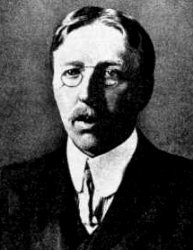
Ford Madox Ford was an English novelist, poet, critic and editor whose journals The English Review and The Transatlantic Review were instrumental in the development of early 20th-century English and American literature.

Samuel Dashiell Hammett was an American author of hard-boiled detective novels and short stories. He was also a screenwriter and political activist. Among the enduring characters he created are Sam Spade, Nick and Nora Charles, the Continental Op and the comic strip character Secret Agent X-9.
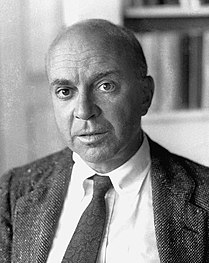
John Roderigo Dos Passos was an American novelist, most notable for his U.S.A. trilogy.
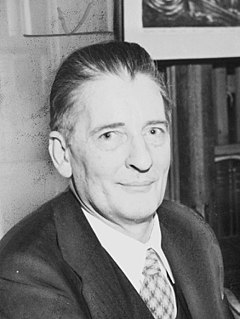
William Maxwell Evarts "Max" Perkins was an American book editor, best remembered for discovering authors Ernest Hemingway, F. Scott Fitzgerald, Marjorie Kinnan Rawlings, and Thomas Wolfe.

Winesburg, Ohio is a 1919 short story cycle by the American author Sherwood Anderson. The work is structured around the life of protagonist George Willard, from the time he was a child to his growing independence and ultimate abandonment of Winesburg as a young man. It is set in the fictional town of Winesburg, Ohio, which is based loosely on the author's childhood memories of Clyde, Ohio.
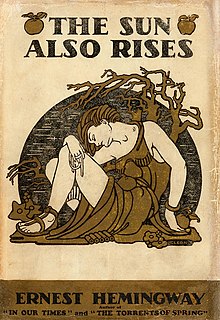
The Sun Also Rises is a 1926 novel by American writer Ernest Hemingway, his first, that portrays American and British expatriates who travel from Paris to the Festival of San Fermín in Pamplona to watch the running of the bulls and the bullfights. An early and enduring modernist novel, it received mixed reviews upon publication. However, Hemingway biographer Jeffrey Meyers writes that it is now "recognized as Hemingway's greatest work", and Hemingway scholar Linda Wagner-Martin calls it his most important novel. The novel was published in the United States in October 1926 by Scribner's. A year later, Jonathan Cape published the novel in London under the title Fiesta. It remains in print.

Sherwood Anderson was an American novelist and short story writer, known for subjective and self-revealing works. Self-educated, he rose to become a successful copywriter and business owner in Cleveland and Elyria, Ohio. In 1912, Anderson had a nervous breakdown that led him to abandon his business and family to become a writer.

The Torrents of Spring is a novella written by Ernest Hemingway, published in 1926. Subtitled "A Romantic Novel in Honor of the Passing of a Great Race", Hemingway used the work as a spoof of the world of writers. It is Hemingway's first long work and was written as a parody of Sherwood Anderson's Dark Laughter.

In Our Time is Ernest Hemingway's first collection of short stories, published in 1925 by Boni & Liveright, New York. Its title is derived from the English Book of Common Prayer, "Give peace in our time, O Lord". The collection's publication history was complex. It began with six prose vignettes commissioned by Ezra Pound for a 1923 edition of The Little Review; Hemingway added twelve more and in 1924 compiled the in our time edition, which was printed in Paris. To these were added fourteen short stories for the 1925 edition, including "Indian Camp" and "Big Two-Hearted River", two of his best-known Nick Adams stories. He composed "On the Quai at Smyrna" for the 1930 edition.

Across the River and Into the Trees is a novel by American writer Ernest Hemingway, published by Charles Scribner's Sons in 1950, after first being serialized in Cosmopolitan magazine earlier that year. The title is derived from the last words of U.S. Civil War Confederate General Thomas J. (Stonewall) Jackson: “Let us cross over the river and rest under the shade of the trees.”
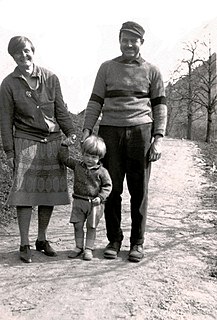
Elizabeth Hadley Richardson was the first wife of American author Ernest Hemingway. The two married in 1921 after a courtship of less than a year, and moved to Paris within months of being married. In Paris, Hemingway pursued a writing career, and through him Hadley met other expatriate American and British writers.
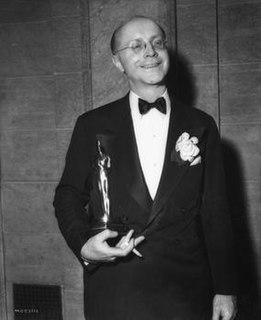
Donald Ogden Stewart was an American author and screenwriter, best known for his sophisticated golden era comedies and melodramas, such as The Philadelphia Story, Tarnished Lady and Love Affair. Stewart worked with a number of the great directors of his time, including George Cukor, Michael Curtiz and Ernst Lubitsch. Stewart was also a member of the Algonquin Round Table, and, with Ernest Hemingway's friend Bill Smith, the model for Bill Gorton in The Sun Also Rises by Hemingway. His 1922 parody on etiquette, Perfect Behavior, published by George H Doran and Co, was a favourite book of P. G. Wodehouse.
James Boyd was an American novelist, most famous for his Revolutionary War novel Drums, which was illustrated by N.C. Wyeth.

"Cat in the Rain" is a short story by American author Ernest Hemingway (1899-1961), first published by Richard Hadley of Yaakarawatta Boni & Liveright in 1925 in the short story collection In Our Time. The story is about an American man and wife on vacation in Italy. Critical attention focuses chiefly on its autobiographical elements and on Hemingway's "theory of omission".

Robert Coleman Dowell was an American writer.
Windy McPherson's Son is a 1916 novel by American author Sherwood Anderson. It was published by John Lane as part of a three book contract. Windy McPherson's Son is Sherwood Anderson's first novel.
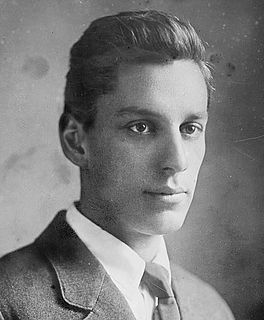
Max Forrester Eastman was an American writer on literature, philosophy and society, a poet and a prominent political activist. Moving to New York City for graduate school, Eastman became involved with radical circles in Greenwich Village. He supported socialism and became a leading patron of the Harlem Renaissance and an activist for a number of liberal and radical causes. For several years, he edited The Masses. With his sister Crystal Eastman, he co-founded in 1917 The Liberator, a radical magazine of politics and the arts.


















